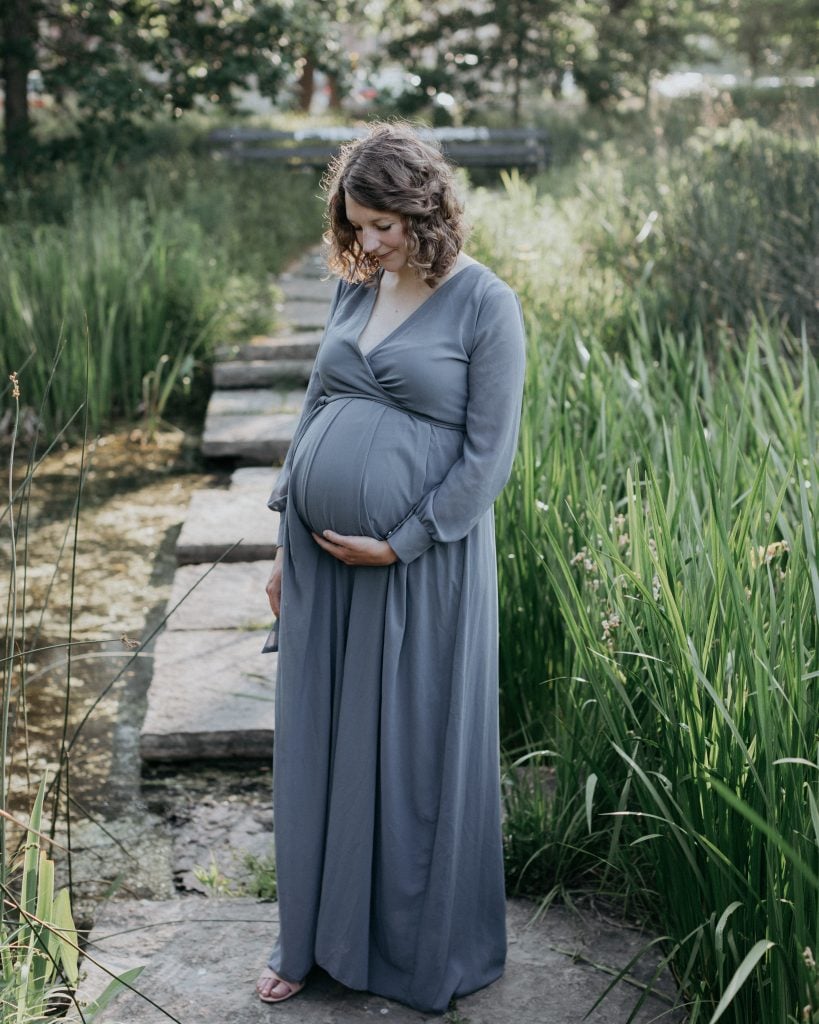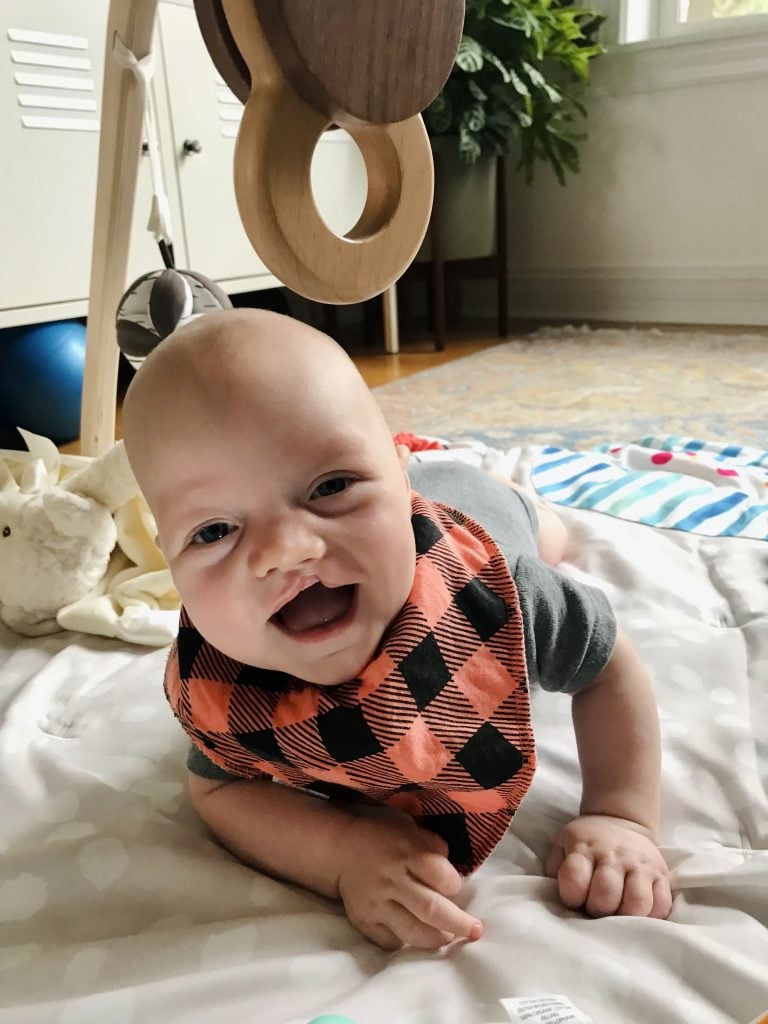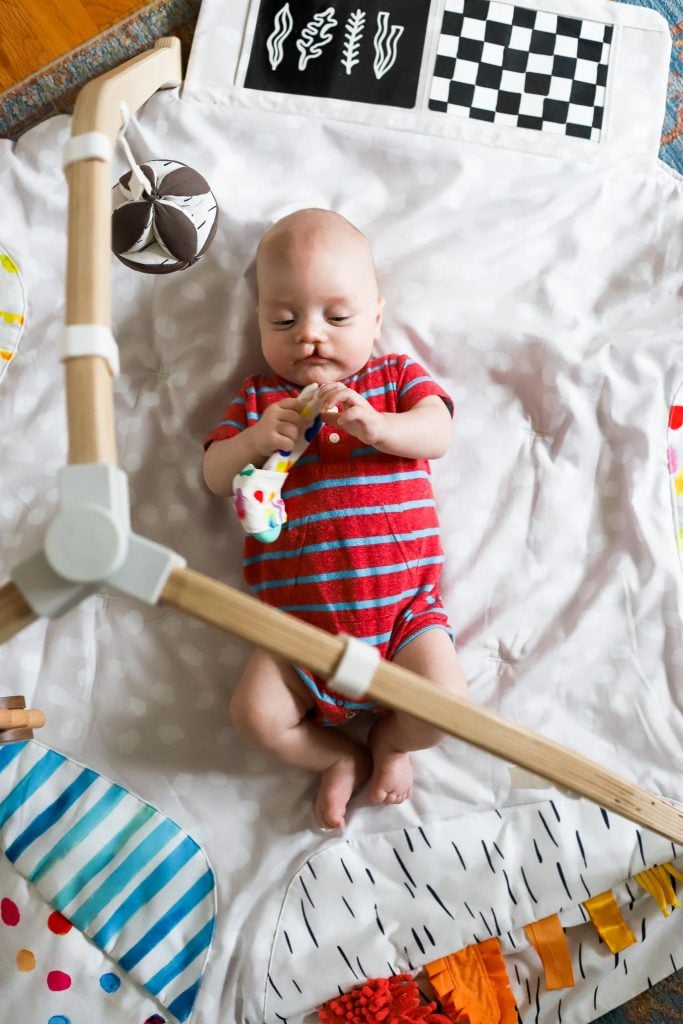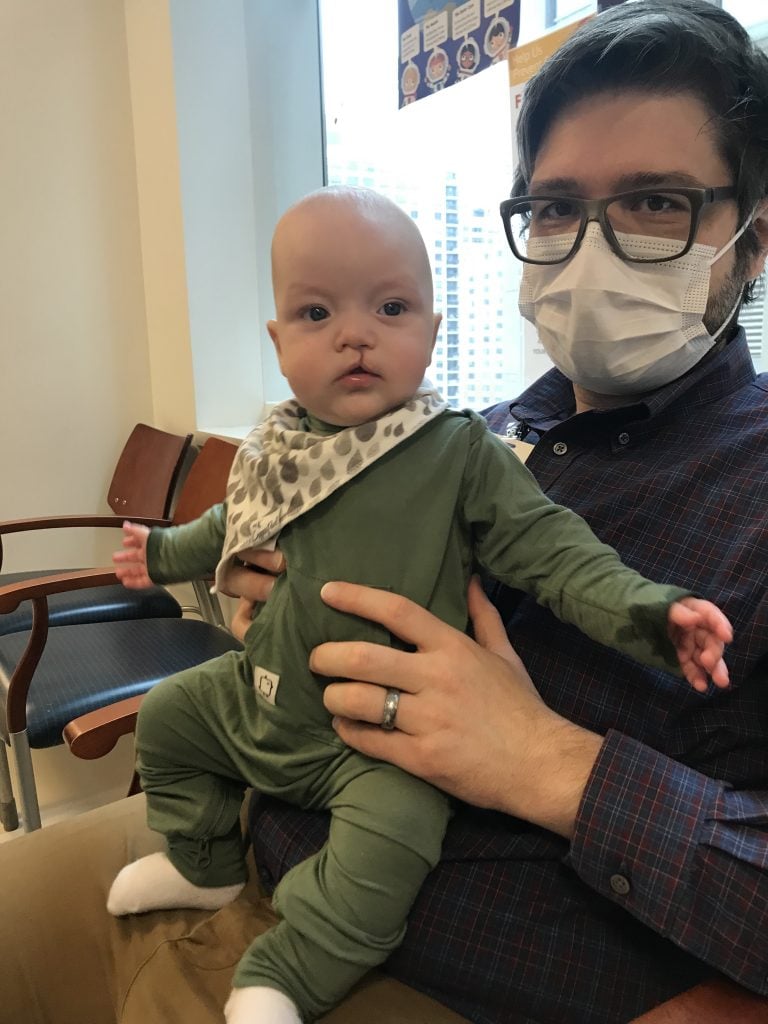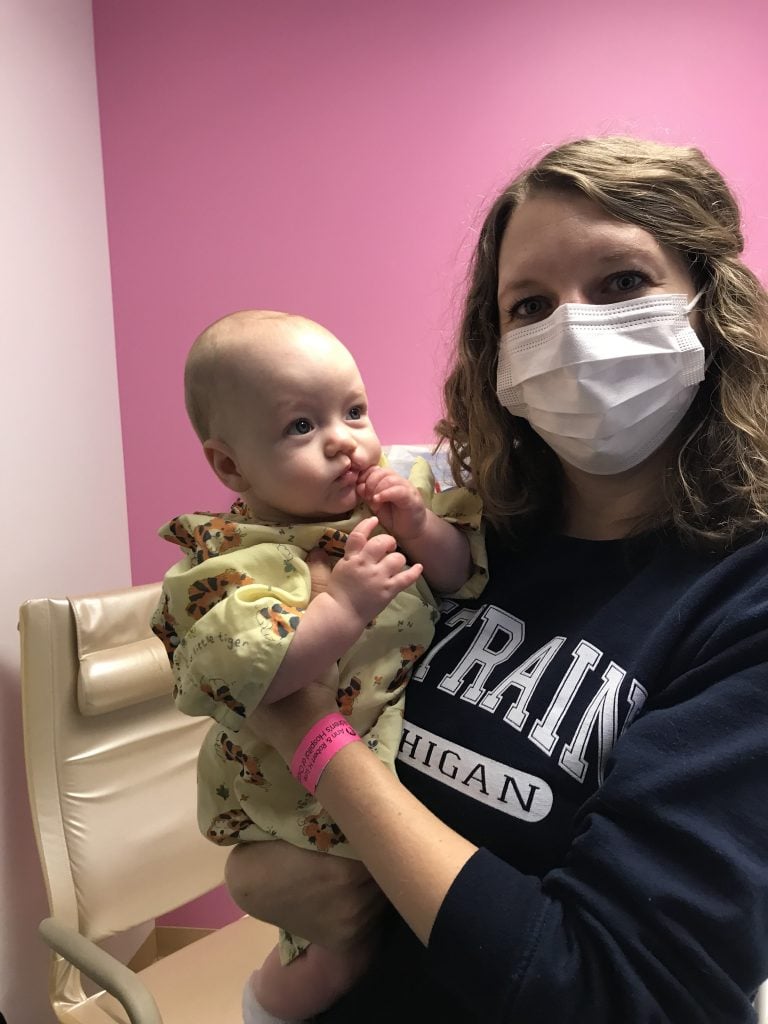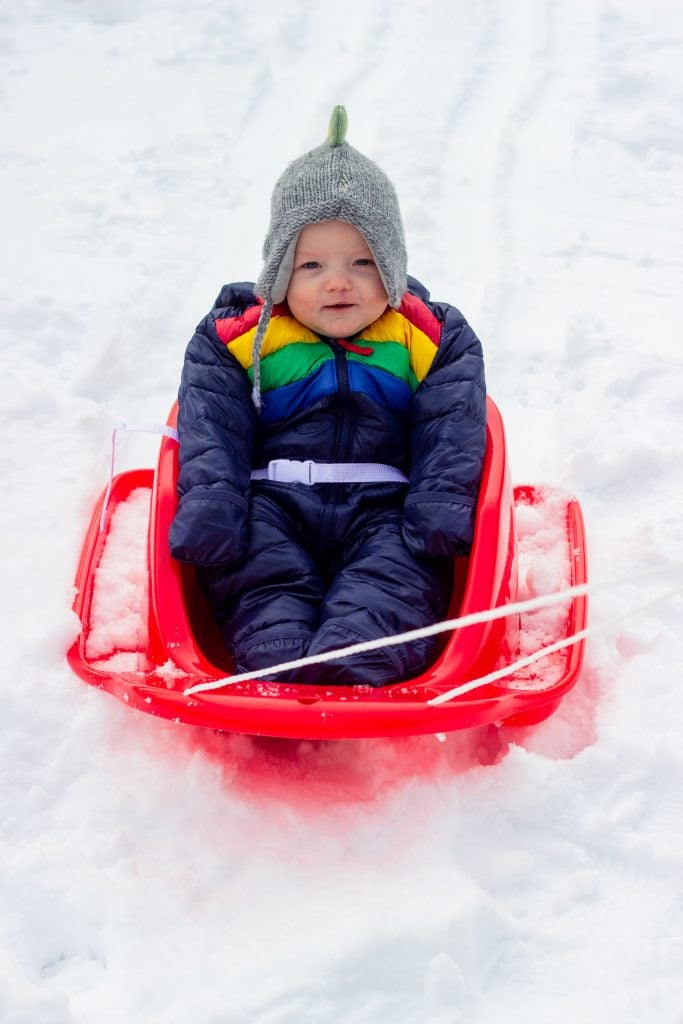Those first few weeks after finding out our son would be born with a cleft, I found comfort in reading other people’s journeys so I thought I would share ours.
Our Cleft Journey with Micah
Receiving the Cleft Diagnosis
Even though we had decided to keep the sex of our baby a surprise until birth, I remember being so excited for the 20 week anatomy ultrasound. It was the first time that you really get to see babe! I remember getting a sinking feeling in my gut when the tech was looking at Micah’s face in that ultrasound because I thought I saw a cleft. I was familiar with cleft lip/palate from grad school but never imagined my own baby would be born with a cleft.
The original plan at my 20 week ultrasound was to have a Telehealth follow up with the OB the next morning to review the results.
When the tech said that the doctor would be able to see me immediately after the ultrasound instead, that sinking feeling returned. Because of COVID, I was alone when they told me our baby would be born with a cleft. I cried the whole drive home from the doctor’s office as a million questions raced through my mind. Is it my fault that our baby has a cleft? Did I take the wrong prenatal vitamin? What will my baby look like? How do we tell people about the cleft? Why me? How do I handle this as a first time mom with no family nearby to help? Will people stare and think my baby is ugly?
Two weeks later we had a follow up appointment at the children’s hospital for additional ultrasounds. And a visit with a maternal fetal specialist as well as the cleft team. (Thankfully, my husband was allowed to come this time despite COVID restrictions. I wouldn’t have been able to handle it on my own.) Babies with cleft lip/palate are at higher risk for other genetic disorders. So we did genetic testing as well as amniocentesis to rule out trisomy13, etc. We met with a plastic surgeon who reviewed our ultrasound and discussed our surgery options in the future. At the time, it looked like Micah had both a cleft lip and palate. So we were mentally preparing ourselves for potential feeding issues and surgeries.
For weeks after those initial appointments I was a mess as I came to terms with the cleft diagnosis.
I immediately started researching cleft lip and palate treatment and joined a few facebook groups for cleft moms. Anxiety clouded the last half of my pregnancy and I felt so guilty that I wasn’t as excited about my pregnancy as I had been before the diagnosis. Of course, once he was born all my previous fears melted away.
What is cleft lip and cleft palate?
Babies with a cleft lip or palate are born with a gap or opening in the roof of their mouth and/or lip. Some are born with only a cleft lip (like my son). Others a cleft palate, or both. It is one of the most common birth defects; one in 700 babies are born with a cleft (CDC).
What causes cleft lip?
The causes for cleft lip/palate are still unknown. Researchers guess that it may be either genetic, environmental, or a combination of both (CDC). Know that if you are reading this after being told your baby will have a cleft, it isn’t your fault! I beat myself up so much during the last half of my pregnancy thinking I did something wrong. Clefts sometimes just happen so don’t blame yourself.
Caring for a baby with cleft lip
Some babies born with a cleft palate will have difficulty eating and may need to spend a few days in the NICU until they’re eating enough to be able to go home. We were lucky that Micah seemed to be doing pretty well with breastfeeding at the beginning. For babies with a cleft, forming a good seal around the breast or bottle and sucking can be difficult. So they often need special bottles for feeding. We tried a few different bottles and settled on these wide mouth bottles from Avent that were recommended by the speech therapist.
A speech therapist is probably the best resource on your cleft team for figuring out the best feeding methods for your cleft baby. There are so many bottle options out there. And many take a bit of practice to figure out the best way to use them. I know we found some of them to be so confusing to use! I also ended up exclusively pumping, you can read more about that here.
After being discharged from the hospital, cleft babies usually follow with a cleft palate team that often includes a plastic surgeon, speech therapist, orthodontist, case manager, etc.
Since Micah just had a cleft lip, we only had a few follow up appointments. And didn’t have to do anything special before surgery. Other cleft babies may need to do some taping of their lip/nose before surgery. And others will require a prosthetic called a nasoalveolar molding (NAM) to help close the gap in their palate. Most babies with clefts will have surgery to close their lip at around 3-4 months. And then a second surgery around 1 year of age to close their palate.
Cleft Lip Surgery
Micah had his cleft lip surgery in November, a couple of weeks before Thanksgiving. Our hospital provided us with a checklist of a few things that needed to be completed before surgery including a physical with his pediatrician, pre-approval with our health insurance, a COVID test, and a pre-op appointment with the surgeon.
We were told to plan to stay overnight at the hospital after surgery for observation since Micah was only 4 months old. And would be under anesthesia for several hours. Our surgery was scheduled for early morning, so Micah had to fast after midnight the night before surgery. Watching them wheel him away to surgery was one of the hardest moments of my life. The surgery took about 4 hours. So we did our best to distract ourselves with work on our laptops and grabbing lunch downstairs at the hospital.
He came through surgery well and we were allowed to feed him with a bottle as soon as he seemed ready to eat post-op.
That first night in the hospital was hard since he was in quite a bit of pain. But by the time they discharged us late the next morning he was eating fairly well. In addition to correcting his cleft lip, the surgeon also straightened out his septum and his left nostril. So he had a couple of stitches in his nose as well that was pretty sore.
Although we had heard this from others with cleft babies, we were surprised by how much we missed his cleft smile after surgery. We almost felt like we were being discharged home with a different baby! Over time though, we have fallen in love with his new smile all over again. But I’m glad we took lots of photos with his cleft so we have those to look back on.
Post-Op Care
For that first week post-op, we made sure to give him Tylenol on a schedule to help with any pain while his lip and nose continued to heal. The surgeon had taped over his lip to support the scar and stitches. And we were told to just leave it alone. A week later, we went back to the OR to have the stitches removed and our surgeon placed a nasal stent as well. Since they had to straighten out Micah’s left nostril to make his nose more symmetrical, the stent help hold the nostril open as it healed.
Some surgeons will stitch the nasal stent in place. But ours prefers to tape it in place so it could be removed to clean.
It was basically the same process as the initial surgery as far as the fasting guidelines (no milk after midnight). But luckily it was a quick procedure so Micah was only under anesthesia for an hour at most. We were able to take him home again after an hour or so of observation.
After surgery, we just continued to put surgical tape over his lip and tape on his nose to hold the nasal stent in place. The nasal stent fell out all the time so we had to be creative with taping it in place. And found that taping it over the bridge of his nose was the best option. (Thanks to some posts on the cleft mom Facebook group for that tip!) Our surgeon had us continue taping his lip and using the nose stent for about 3 months post op. We made sure to send a small case with him to daycare so they can put the stent in there if/when it falls out when he is there during the day and we just put it back in place when we got him home.
I am so glad we are on the other side of things and we are so happy with his forever smile!
The scar should start to lighten over time. And we try to be diligent about applying sunscreen on it whenever we are out and about. If you’re a cleft mama reading this, here are a few resources that I found so helpful:


